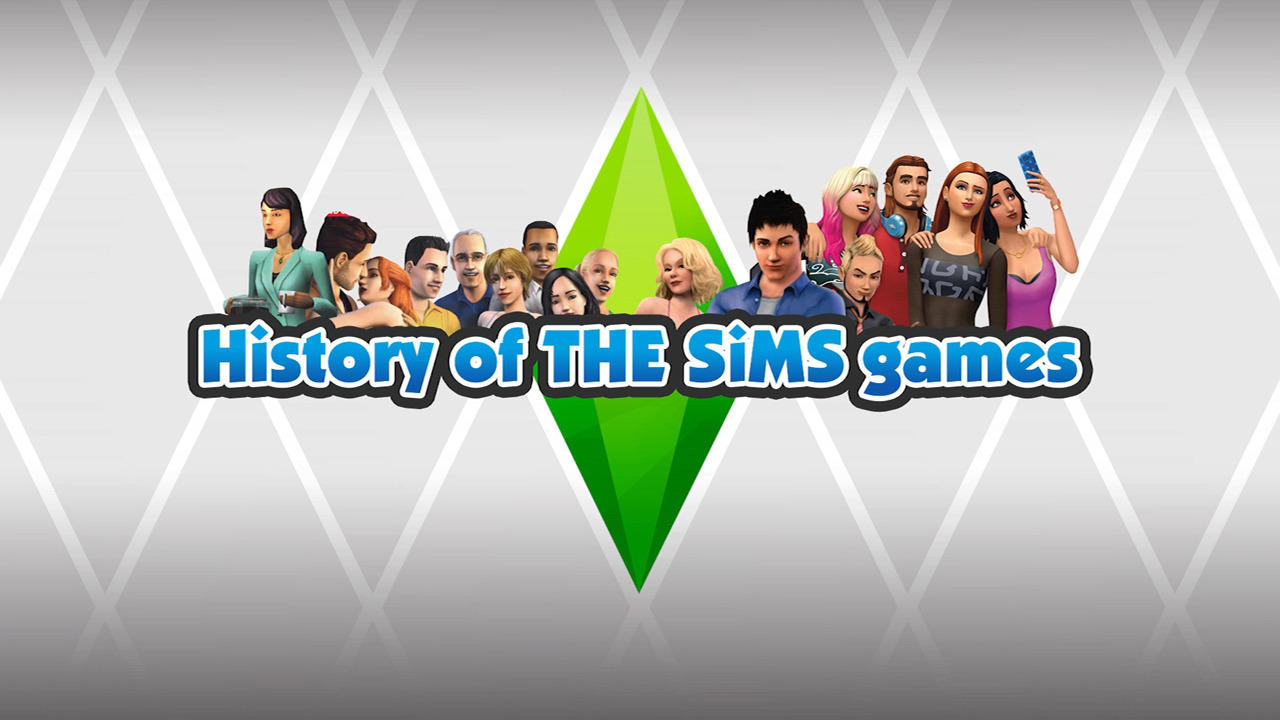
In 2000, California-based developer Maxis released a game about micromanaging someone’s life, allowing players to pull strings to get them to do chores, go to work, find friends, and more. Filling a niche that no one knew existed, The Sims became as much a cultural phenomenon as it was a video game. With the release of The Sims 4 and the new Pets expansion pack for Xbox One and PS4, we thought we’d take another look at the story of one of the greatest PC series of all time.
In this gallery, we’ll take a look from the beginning at the game that sparked the idea for The Sims, how creator Will Wright pursued his early ideas, and how The Sims ultimately came to be. Like any long-running video game series, The Sims has had its ups and downs, as have Will Wright, developer Maxis, and publisher EA, and those ups and downs are covered in detail.
For those who prefer to watch a video, we have a 30-minute review of The Sims’ story that covers the same touchpoints and goes into a lot more depth into the story.
Raid on Bungeling Bay (1984)
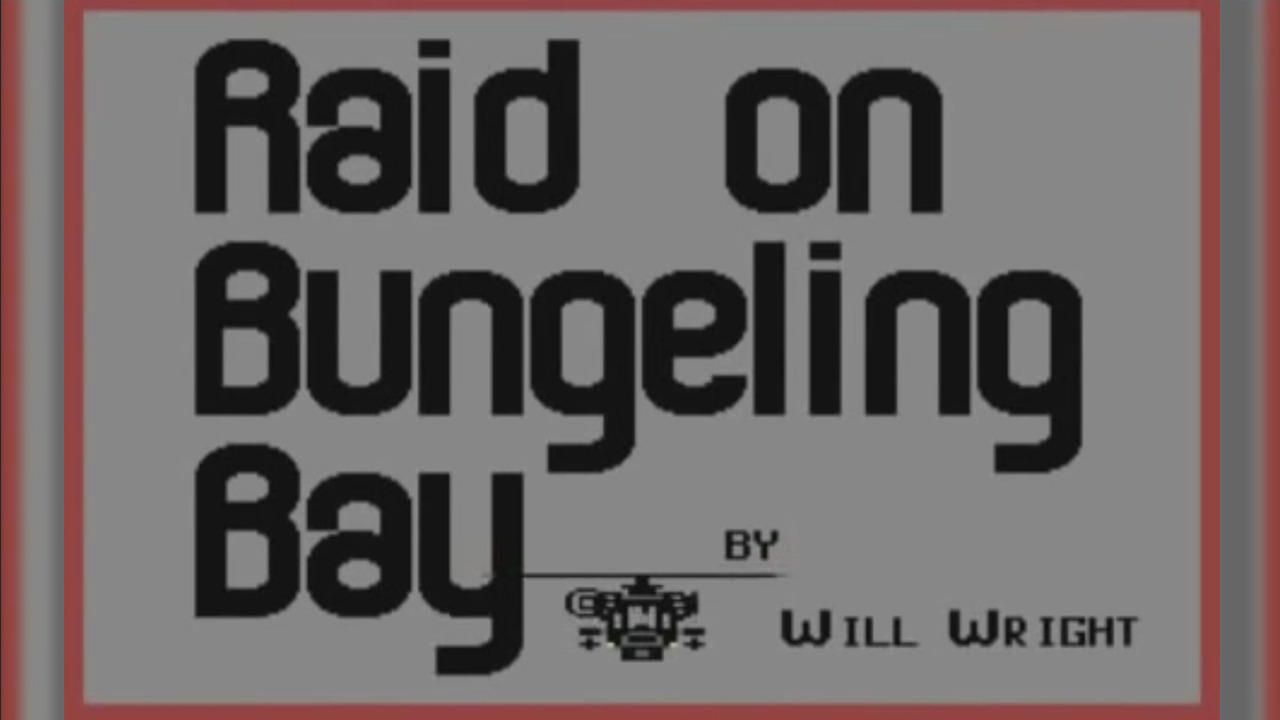
While this wasn’t a true “Sims” title, Will Wright realized when he designed Raid on Bungeling Bay that he had more fun creating the world that was the core of the game than actually blowing it up.
He wondered what it would be like to bring this world to life rather than destroying it, and he continued to tinker with the game’s level editor even after Bungeling Bay’s release. Wright tweaked variables, adding elements like traffic, ecosystems, and people, and watched the simulated city grow and change over time in response. He read about urban planning and put the new theories he studied into practice by coding them directly into the simulator. This side project eventually became SimCity.
SimCity (1989)
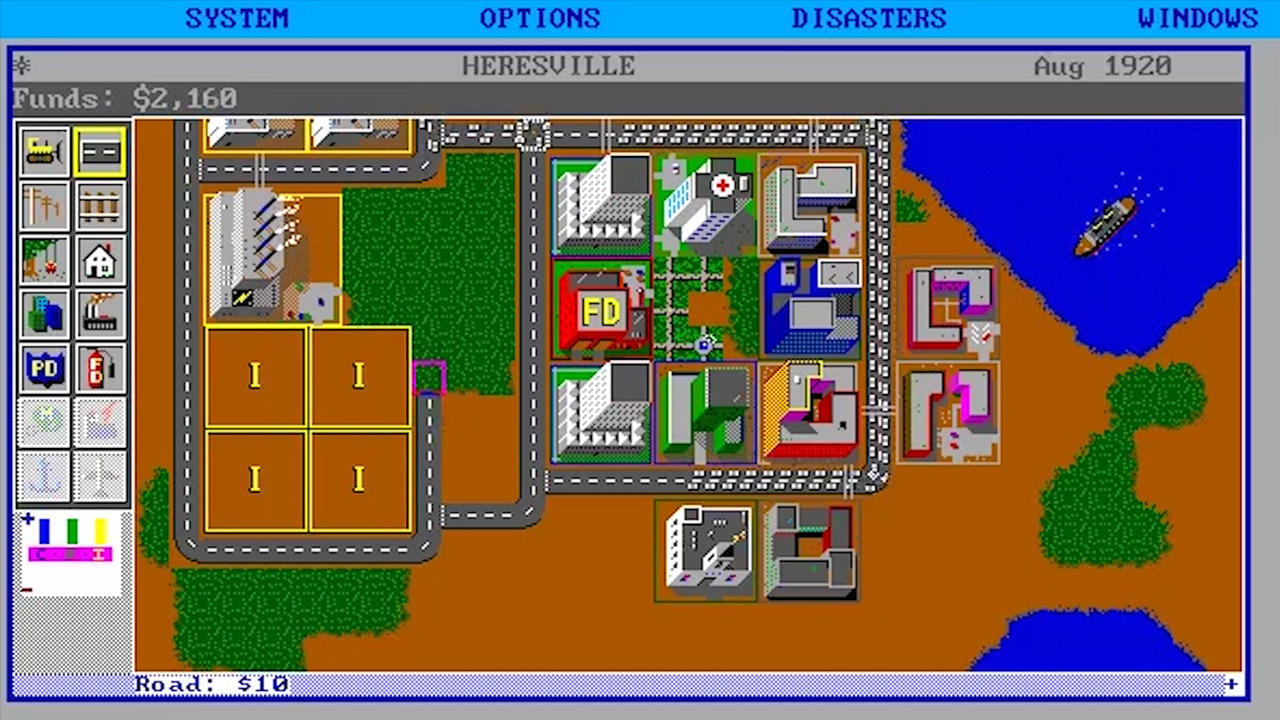
SimCity was a city-building simulation game that was unique for its time. You couldn’t win or lose in the traditional sense. There were no cut scenes, and it had no thrilling, suspenseful ending. The game’s publisher was stumped, and asked Wright, “How do you make this into a game?”
After struggling to publish SimCity, Wright founded a company called Maxis with Jeff Brown, an entrepreneur who wanted to get into the video game industry. In 1989, Maxis released SimCity. Though it got off to a slow start, the game began to gain popularity, and by 1992 it had sold one million copies. SimCity has been praised by critics and fans alike, won numerous awards, and is even used in urban planning and political science classes.
Various Sim Titles (1990-)
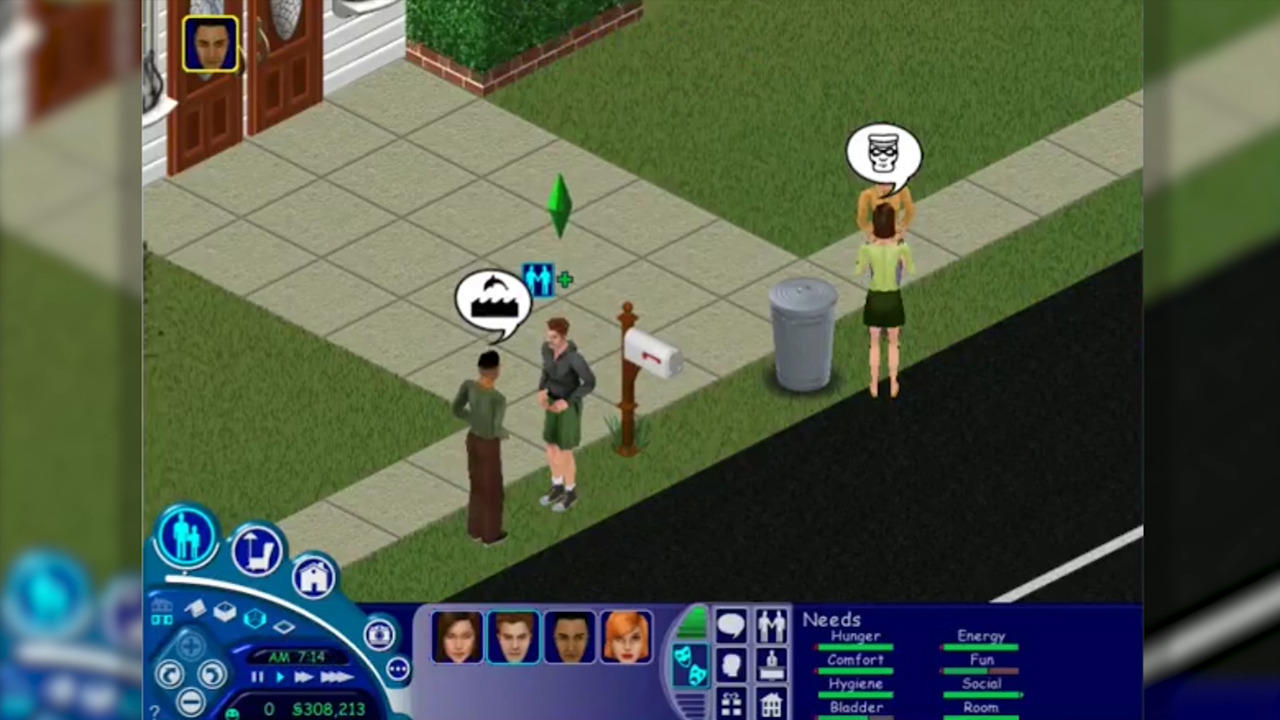
Recognizing that hobby games had struck a chord with the public, Maxis continued to release “Sim” titles such as SimEarth and SimAnt, as well as sequels to SimCity, throughout the ’90s. However, none of the games published by Maxis achieved the same critical success or sales as the original SimCity. After experimenting with different genres, including 3D Pinball for Windows, released in 1995, and suffering a series of commercial failures, the company considered a takeover bid. It wasn’t until the studio was acquired by EA in 1997 that Maxis experienced a new upswing.
The Sims (2000)
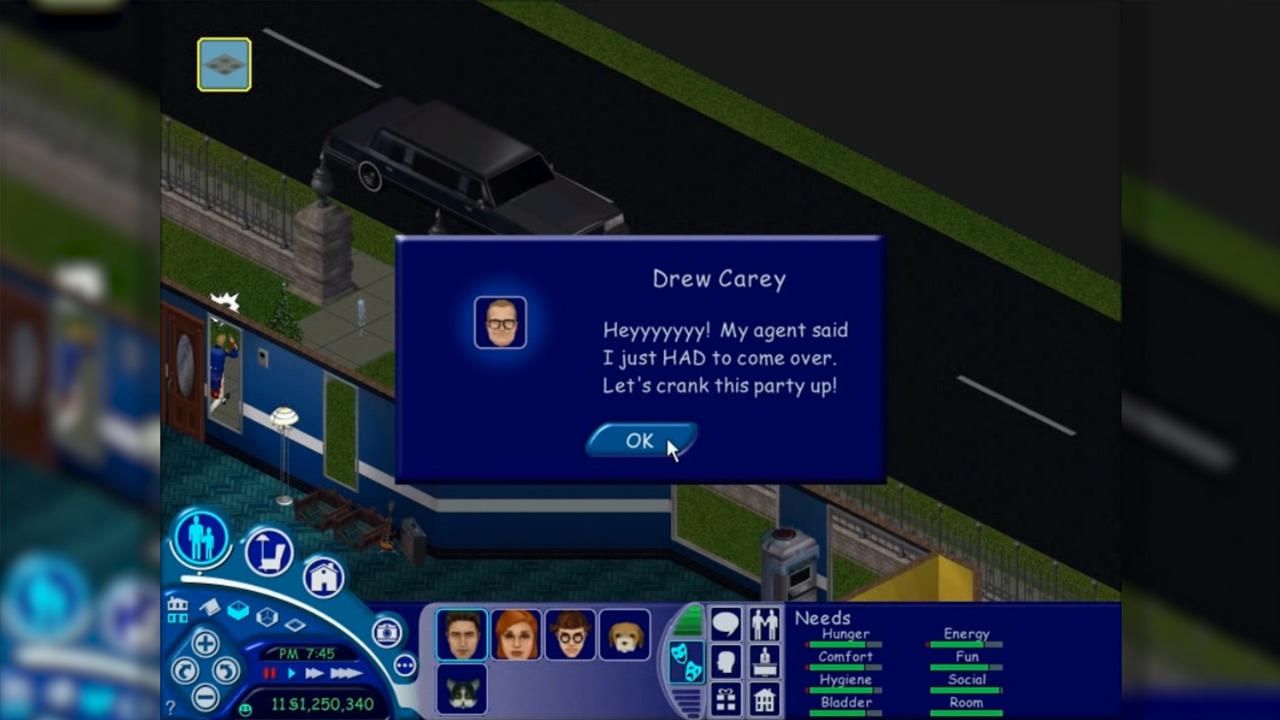
The Wright family lost their home in a fire in the early 1990s. As they began replacing their belongings, Wright wondered why people buy things – specifically, whether they think buying things will fulfill their wants and needs and make them happy. He started working on a game where players could build a virtual home and fill it with items, but realized they needed something, or someone, to “rate” how well-furnished the home was.
And so The Sims were born. He realized that these Sims could be more sophisticated than just home critics; they could be real people with lives of their own. After EA acquired Maxis, Wright was given the team he needed to bring The Sims to market.
Released in February 2000, the game allowed players to raise a family and determine their daily lives. With a starting account balance of 20,000 Simoleons (§), Sims could buy a vacant lot or build and furnish their own home. Following the open “hobby philosophy” of Wright’s previous games, players were free to do as they pleased with their Sims once they moved in. Sims have eight basic needs that they need to manage, they can get jobs, form relationships with others, and even die.
The Sims Expansion Packs (2000-2003)
To capitalize on the massive success of The Sims and satisfy a player base hungry for more content, Maxis began releasing themed expansion packs. These packs regularly introduced a variety of new objects, building styles, and even new gameplay mechanics, all for a lower price than the full game. They allowed Maxis to experiment with new ideas at a relatively low cost, and kept interest in The Sims high. The first Sims game had seven expansion packs, including Hot Date, Unleashed, and Making Magic.
The Sims Online (2002)

In December 2002, The Sims Online, an MMO-inspired version of The Sims 1, was released for PC. For $9.99 per month, players could create a Sim avatar and transport it into a world filled with other players.
But The Sims Online couldn’t keep up with the original game. It didn’t have the ability to create custom content, a key aspect of the original game and a key feature of the game’s biggest competitor, Second Life. Though players played with thousands of other real-life people, they were frantically trying to improve their skills rather than actually interacting with one another. The game featured a fully simulated economy, but was completely ruined by a bug that allowed players to double winnings by interacting with clothing racks.
In early 2008, the game was re-released as a free-to-play EA Land title, where players could acquire in-game Simoleons with real money. Custom content was eventually added, but it wasn’t enough; EA Land was shut down just four weeks after release.
The Sims (2003), Bustin’ Out (2003), The Urbz: Sims In The City (2004)
In 2003, the world’s leading PC game made its console debut on PS2, Xbox, and GameCube. The Sims had two game modes: the mission-based Get a Life, in which your Sims tried to get out of their mother’s house, and the Sims game mode, which was closer to the classic Sims Free Play. The next console release,
Bustin’ Out, was a very similar game with a single-player story and a free play mode, but this time your Sims could leave their house and visit other places.
The Urbz: Sims In The City added some improvements to the usual Sims formula. In addition to building relationships and fulfilling needs, your “Urb” also had to build a “reputation” with other Urbs in order to gain fame and fortune and advance into new neighborhoods in “UrbzVille”. Urbz was the first Sims game to feature a weather system, and its music was written and performed in Simlish by the Black Eyed Peas, who also appeared in the game.
The Sims 2 (2004)
Sims now had personalities. They formed memories and had clear desires and fears that led to their ultimate life goals. Sims now valued family and careers and craved money and power. Sims remembered important events in their lives, both positive and negative, and if they consistently achieved their goals they were happier and lived longer.
But the biggest change was the addition of genetics. In The Sims 1, there was no guarantee that a child would resemble either parent. In The Sims 2, female Sims can become pregnant after a successful “WooHoo”, and babies will inherit not only their parents’ appearances but also aspects of their personality. Sims go through six life stages, each offering a unique experience depending on their age.
But Sims weren’t the only ones experiencing big changes. Thanks to the game’s new engine, players can now see the world in full 3D. Days of the week have been added, the “Build and Buy” mode has received gameplay tweaks and new items, and “Create a Sim” has been overhauled for improved Sim customization.
The Sims 2 Expansion Packs And Stuff Packs (2005-2008)
Over the course of four and a half years, eight expansion packs for The Sims 2 were released. While packs such as Pets and Bon Voyage were very similar in style and content to the Sims 1 expansions, most packs for The Sims 2 introduced significant changes to the game.
Realizing how hungry the audience was for new things, Maxis began releasing themed accessory packs. These were cheaper than expansions but included many new items. There were nine stuff packs for The Sims 2, including one featuring clothing brand H&M and everyone’s favorite kit furniture store IKEA.
The Sims 2 (Console, 2005), Sims Stories (2007-2008)
The Sims 2 on PC was such a success that it was ported to a variety of different platforms. The base game was ported to home consoles, and some of the expansions, such as Pets, were ported as standalone games to handheld devices such as the PSP and Game Boy Advance. Three games named “Sims Stories” were released between 2007 and 2008. These games allowed players to play story modes of pre-made sims before creating and playing their own sims. The Stories games were preview games, especially aimed at users who did not have a PC powerful enough to run the main game.
Spore (2008), Will Wright Leaves Maxis (2009)

In 2008, Maxis released Spore, a simulation that lets players control life on an incredible scale, from a cell to a galaxy. You can create a microorganism, control its development and evolution through five stages, and watch its intelligence, the development of social skills, and ultimately its ascension into space.
Spore was the last game Wright worked on for Maxis. He left the company in 2009 to join a small startup called Stupid Fun Club, an “entertainment development studio” where players could implement their ideas into other media, such as video games. In 2011, he became a member of the board of directors of Second Life, an old competitor of The Sims Online.
Though he hasn’t been seen publicly with any new projects in recent years, Wright’s contribution to video games cannot be underestimated: he received a Lifetime Achievement Award at GDC in 2001 and became the first game designer to receive a BAFTA Fellowship in 2007. His ideas changed the way we think about video games and brought them to entirely new audiences.
The Sims 3 (2009)
Previously, if you wanted to send a Sim somewhere, such as a common area, there would be a loading screen between the two areas. In The Sims 3, you could simply zoom out from your Sim’s home lot and they would appear on the neighborhood map without a loading screen. If you sent your Sim to work, you could now track his journey around the neighborhood.
To make The Sims 3 feel more like a real “living world”, there was an optional new feature called “Story Progression”. This meant that all the Sims in the neighborhood would continue to live their lives without your intervention. This meant that some Sims could die, form new relationships, and even have children, even if they were family Sims you created.
The Sims 3 Expansions And Stuff Packs (2009-2013)
EA released 11 expansion packs for The Sims 3. Most were inspired by previous packs and included the usual stuff like pets, seasons, some holiday packs, and the ability for Sims to go to college.
Some, like B. Showtime, added new ways to interact with real-life friends, including in-game messaging and the ability to send your star Sims on tours of your friends’ games. Of all the expansions, Into the Future is the only truly original version, providing a futuristic atmosphere and new items to make your Sims’ lives easier. There were also nine item packs for The Sims 3, including luxury loft items, city life items, and Katy Perry’s sweet treats.
MySims (2007), The Sims Social (2011), The Sims Freeplay (2011), The Sims Medieval (2011)
With The Sims’ success seemingly undiminished, further spin-offs were expected. These came in the form of the cute MySims series, aimed at younger players, which itself spawned five sequels.
In 2011, The Sims went back in time with The Sims Medieval, a strange mix of The Sims and a regular role-playing game. Sims only had to track two needs – hunger and energy – and they didn’t go through life stages. You couldn’t build anything anymore. You were given a series of pre-built castles and buildings that you could decorate. But anyone who wanted to be a castle builder was out of luck.
In 2011, you could also connect with your Facebook friends with The Sims Social. It quickly became one of the most popular games on Facebook, with 16 million players in the first week alone. However, a series of bugs and a lack of new content caused it to quickly fall in the rankings and it was canceled after just two years.
The mobile game The Sims Freeplay is still regularly updated and differs from the main Sims game in that it runs in real time – there is no acceleration: a minute in the real world is a minute in the game, and activities and interactions take time.
The Sims 4 (2014)
After a lackluster reboot of SimCity in 2013, Maxis needed The Sims 4 to be a hit. Its biggest innovation was SmartSim, which allowed you to express emotions based on events around you. It combined build and buy modes into one, letting you customize your Sims’ appearance any way you wanted.
But despite these gameplay improvements, there was a lot missing from The Sims 4. Toddlers, an entire stage of life, was noticeably absent from the game’s release. Pools, a staple of The Sims since the first game, were also unavailable. The huge, seamless world introduced in The Sims 3 was also gone. Create A Style was no longer there, and the Neighborhood map had no basements, grocery stores, or school/work areas.
The Sims 4 Expansion, Stuff, And Game Packs (2015-Present)
Since the release of The Sims 4, there have only been four expansion packs for The Sims 4, the most recent being Cats and Dogs. Instead of expansions, there have been five game packs. These are smaller than expansions but larger than accessories, and introduce new game mechanics such as parenting skills and vampirism. Many of the features requested by fans, such as a toddler and a swimming pool, were missing but were eventually added. The game includes 12 stuff packs, with the development of the next pack, Laundry Day Stuff, being decided by a community vote. Console versions of the game have also been released, with a mobile version in development for next year.

Leave a Reply